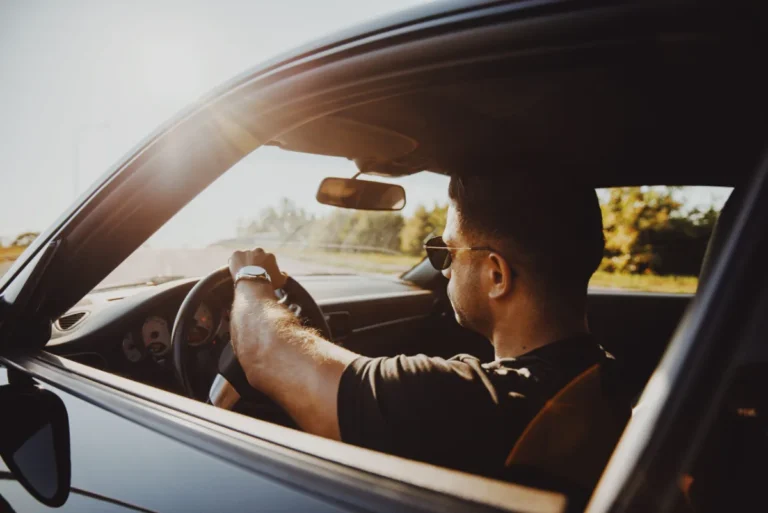WHAT IS ELECTRONIC TRANSMISSION OF CERTAIN VISUAL MATERIAL DEPICTING MINOR IN TEXAS?
The Texas law against electronic transmitting certain visual material depicting a minor prohibits a person under 18 from creating, possessing, selling, providing, delivering, transferring, publishing, disseminating, exhibiting, or circulating by electronic means any film, photograph, videotape, or reproduction thereof of a minor engaging in sexual conduct.
- Is it a crime in Texas for minors to text naked photos or videos of themselves? Yes. Texas Penal Code Section 43.261 punishes anyone under 18 years old for creating or distributing photos and videos of minors under 18 engaging in sexual conduct, including themselves.
WHAT IS THE ELECTRONIC TRANSMISSION OF CERTAIN VISUAL MATERIAL DEPICTING MINOR LAW IN TEXAS?
Tex. Penal Code § 43.261. ELECTRONIC TRANSMISSION OF CERTAIN VISUAL MATERIAL DEPICTING MINOR.
(b) A person who is a minor commits an offense if the person intentionally or knowingly:
(1) by electronic means promotes to another minor visual material depicting a minor, including the actor, engaging in sexual conduct, if the actor produced the visual material or knows that another minor produced the visual material; or
(2) possesses in an electronic format visual material depicting another minor engaging in sexual conduct, if the actor produced the visual material or knows that another minor produced the visual material.
(c) An offense under Subsection (b)(1) is a Class C misdemeanor, except that the offense is:
(1) a Class B misdemeanor if it is shown on the trial of the offense that the actor:
(A) promoted the visual material with intent to harass, annoy, alarm, abuse, torment, embarrass, or offend another; or
(B) except as provided by Subdivision (2)(A), has previously been convicted one time of any offense under this section; or
(2) a Class A misdemeanor if it is shown on the trial of the offense that the actor has previously been:
(A) convicted one or more times of an offense punishable under Subdivision (1)(A); or
(B) convicted two or more times of any offense under this section.
(d) An offense under Subsection (b)(2) is a Class C misdemeanor, except that the offense is:
(1) a Class B misdemeanor if it is shown on the trial of the offense that the actor has previously been convicted one time of any offense under this section; or
(2) a Class A misdemeanor if it is shown on the trial of the offense that the actor has previously been convicted two or more times of any offense under this section.
(e) It is an affirmative defense to prosecution under this section that the visual material:
(1) depicted only the actor or another minor:
(A) who is not more than two years older or younger than the actor and with whom the actor had a dating relationship at the time of the offense; or
(B) who was the spouse of the actor at the time of the offense; and
(2) was promoted or received only to or from the actor and the other minor.
(f) It is a defense to prosecution under Subsection (b)(2) that the actor:
(1) did not produce or solicit the visual material;
(2) possessed the visual material only after receiving the material from another minor; and
(3) destroyed the visual material within a reasonable amount of time after receiving the material from another minor.
(g) If conduct that constitutes an offense under this section also constitutes an offense under another law, the defendant may be prosecuted under this section, the other law, or both.
(h) Notwithstanding Section 51.13, Family Code, a finding that a person has engaged in conduct in violation of this section is considered a conviction for the purposes of Subsections (c) and (d).
WHAT IS THE PENALTY CLASS FOR ELECTRONIC TRANSMISSION OF CERTAIN VISUAL MATERIAL DEPICTING MINOR IN TEXAS?
The penalty classification for electronically transmitting certain visual material depicting a minor depends on the accused minor’s conduct, and whether the person has prior convictions for electronic transmission of certain visual material depicting a minor.
- Class C misdemeanor, punishable by a maximum $500 fine, if the accused minor:
- promoted visual material to another minor that shows a minor engaging in sexual conduct, if the accused or another minor produced the material; or
- possessed electronic visual material that shows another minor engaging in sexual conduct, if the accused or another minor produced the material;
- Class B misdemeanor, punishable by up to 180 days in county jail, if the accused minor:
- promoted visual material to another minor that shows a minor engaging in sexual conduct, and:
- did so with intent to harass, annoy, alarm, abuse, torment, embarrass, or offend another; or
- has one prior conviction for electronic visual material depicting a minor;
- possessed electronic visual material that shows another minor engaging in sexual conduct, and has one prior conviction for electronic visual material depicting a minor;
- promoted visual material to another minor that shows a minor engaging in sexual conduct, and:
- Class A misdemeanor, punishable by up to one year in county jail, if the accused minor:
- promoted visual material to another minor that shows a minor engaging in sexual conduct, and has:
- one prior conviction for a Class B misdemeanor electronic transmission of certain visual material depicting a minor with the intent to harass, torment, or embarrass another; or
- at least two prior convictions for electronic transmission of certain visual material depicting a minor;
- possessed electronic visual material that shows another minor engaging in sexual conduct, and has two or more prior convictions for electronic transmission of certain visual material depicting a minor.
- promoted visual material to another minor that shows a minor engaging in sexual conduct, and has:
WHAT IS THE PUNISHMENT RANGE FOR ELECTRONIC TRANSMISSION OF CERTAIN VISUAL MATERIAL DEPICTING MINOR IN TEXAS?
The punishment range for electronic transmission of certain visual material depicting a minor corresponds to the penalty classification, which is categorized based on the person’s conduct, and whether the person has prior convictions.
- Class A misdemeanor: up to one year in jail, maximum $4,000 fine;
- Class B misdemeanor: up to 180 days in jail, maximum $2,000 fine;
- Class C misdemeanor: maximum $500 fine.
WHAT ARE THE PENALTIES FOR ELECTRONIC TRANSMISSION OF CERTAIN VISUAL MATERIAL DEPICTING MINOR IN TEXAS?
A person charged with Class A or Class B misdemeanor electronic transmission of certain visual material depicting a minor may be eligible for probation after a conviction, or deferred adjudication without a conviction, for a period not to exceed two years.
A person charged with electronic transmission of certain visual material depicting a minor as a Class C misdemeanor may be placed on deferred adjudication for up to 180 days. A conviction will result in no jail time, a required fine not to exceed $500, and no community supervision term.
WHAT ARE THE DEFENSES TO ELECTRONIC TRANSMISSION OF CERTAIN VISUAL MATERIAL DEPICTING MINOR IN TEXAS?
A minor accused of possessing prohibited visual material in an electronic format may assert a defense if the accused: (1) did not produce or solicit the visual material; (2) received the material from another minor; and (3) destroyed it within a reasonable amount of time after receiving it from another minor.
- Can minors legally send sexually explicit photos and videos to each other in Texas? Yes, if they are dating or married, in addition to other circumstances. The Texas law prohibiting electronic transmission of certain visual material depicting a minor authorizes an affirmative defense if: (1) the visual material showed only the accused or the accused’s spouse or significant other; (2) the accused and the depicted minor or person with whom the visual material was shared were within two years of each other’s age; and (3) the visual material was shared only between the accused and other minor.
WHAT IS THE STATUTE OF LIMITATIONS FOR ELECTRONIC TRANSMISSION OF CERTAIN VISUAL MATERIAL DEPICTING MINOR IN TEXAS?
The limitation period for electronic transmission of certain visual material depicting a minor is two years.
ELECTRONIC TRANSMISSION OF CERTAIN VISUAL MATERIAL DEPICTING MINOR IN TEXAS
Texas law criminalizes minors sending electronic visual material showing themselves or other minors engaging in sexual conduct. The law also prohibits creating or otherwise contributing to manufacturing visual material depicting a minor engaging in sexual conduct.













